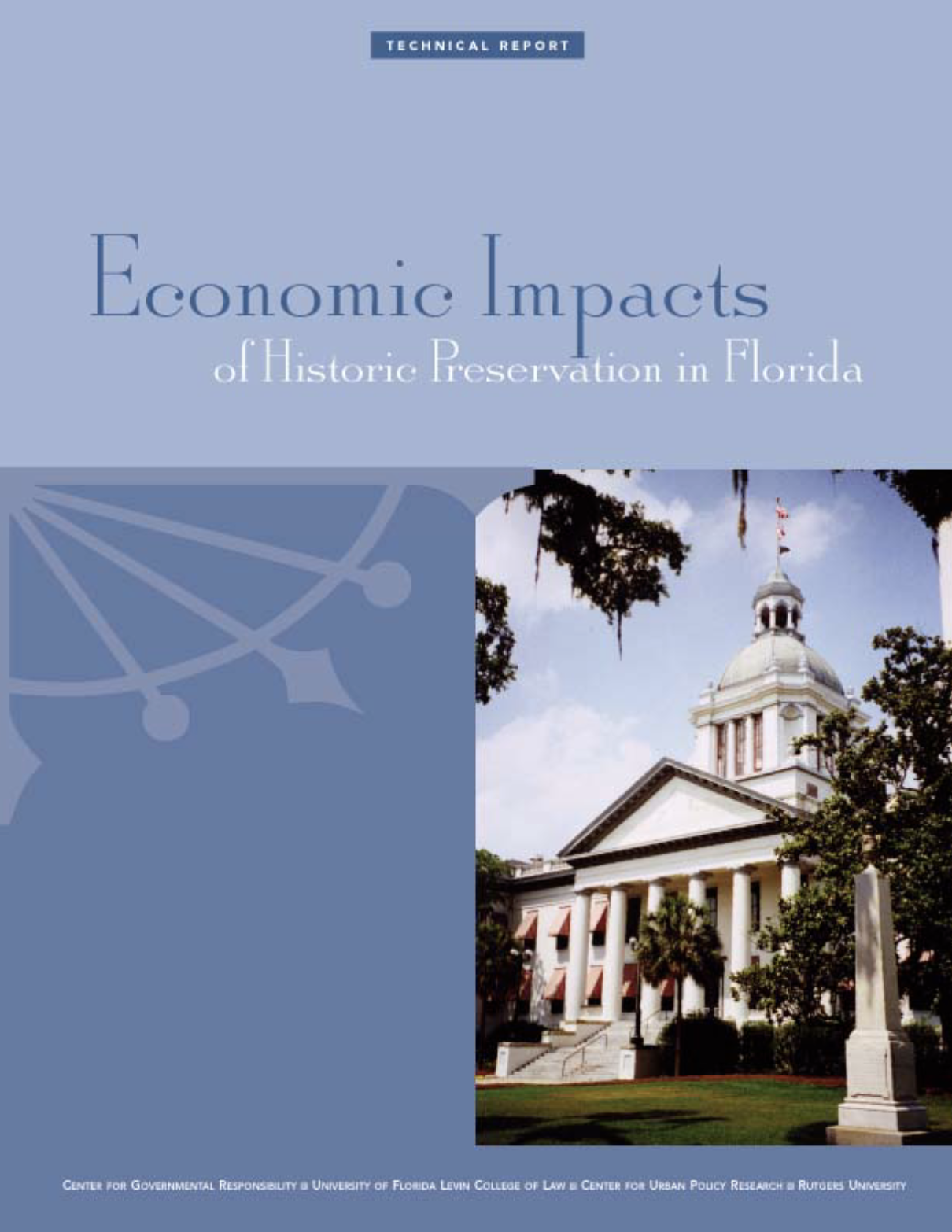This technical study examines the many substantial economic effects of historic preservation in Florida.
The study examines the total economic effects of historic preservation; these encompass both the direct and multiplier effects. The direct impact component consists of labor and material purchases made specifically for the preservation activity. The multiplier effects incorporate what are referred to as indirect and induced economic consequences. The indirect impact component consists of spending on goods and services by industries that produce the items purchased for the historic preservation activity. The induced impact component focuses on the expenditures made by the households of workers involved either directly or indirectly with the activity. To illustrate, lumber purchased at a hardware store for historic rehabilitation is a direct impact. The purchases of the mill that produced the lumber is an indirect impact. The household expenditures of the workers at both the mill and the hardware store are induced impacts. Economists estimate direct and multiplier effects using an input-output (I-O) model. This study specifies the total economic effects of the major components of historic preservation in Florida through a state-of-the-art I-O model developed by the Center for Urban Policy Research (CUPR) for the National Park Service (NPS). The model is termed the Preservation Economic Impact Model (PEIM). The historic preservation components considered by the PEIM include historic rehabilitation, heritage tourism, the Florida Main Street Program, and the operations of Florida historical museums. There is also an analysis of the Florida Historic Preservation Grant Program.
The results of PEIM model include many fields of data. The fields most relevant to this study are the total impacts of the following:
- Jobs: Employment, both part- and full-time, by place of work, estimated using the typical job characteristics of each industry. (Manufacturing jobs, for example, tend to be full-time; in retail trade and real estate, part-time jobs predominate.) All jobs generated at businesses in the region are included, even though the associated labor income of in-commuters may be spent outside of the region. In this study, all results are for activities occurring within the time frame of one year. Thus, the job figures should be read as job- years; i.e., several individuals might fill one job-year on any given project.
- Income: “Earned” or “labor” income—specifically, wages, salaries, and proprietors’ income. Income does not include nonwage compensation (i.e., benefits, pensions, or insurance), transfer payments; or dividends; interest, or rents.
- Wealth: Value added—the equivalent at the subnational level of gross domestic product (GDP). At the state level, this is called gross state product (GSP). Value added is widely accepted by economists as the best measure of economic well-being. It is estimated from state-level data by industry. For a firm, value added is the difference between the value of goods and services produced and the value of goods and nonlabor services purchased. For an industry, therefore, it is composed of labor income (net of taxes); taxes; nonwage labor compensation; profit (other than proprietors’ income); capital consumption allowances; and net interest, dividends, and rents received.
- Taxes: Tax revenues generated by the activity. The tax revenues are detailed for the federal, state, and local levels of government. Totals are calculated by industry. Federal tax revenues include corporate and personal income, social security, and excise taxes, estimated from the calculations of value added and income generated. State tax revenues include income, excise, sales, and other state taxes, estimated from the calculations of value added and income generated (e.g., purchases by visitors). Local tax revenues include payments to substate governments, mainly through property taxes on new worker households and businesses. Local tax revenues can also include sales and other taxes.
The exposition includes seven chapters and two appendices. The first chapter sets the overall perspective and is followed by a series of linked chapters that analyze, in tandem, the direct and the total effects of Florida historic rehabilitation (chapter 2); Florida heritage tourism (chapter 3); the Florida Main Street Program (chapter 4); the Florida Historic Preservation Grants-in-
Aid Program (chapter 6), and a comparative analysis of property values in historic districts and non-historic neighborhoods (chapter 7). The seven chapters are followed by an appendix that details the economic impact model.
